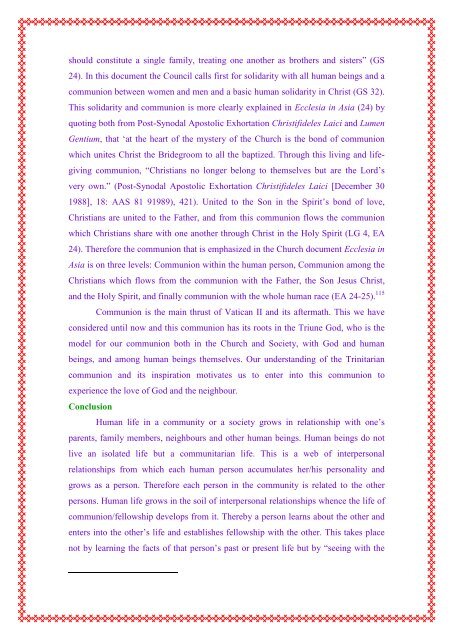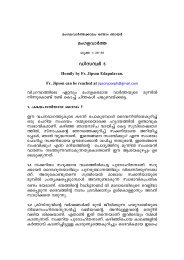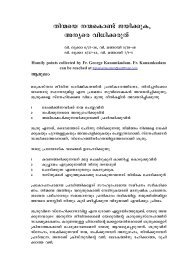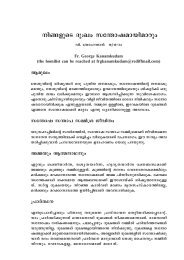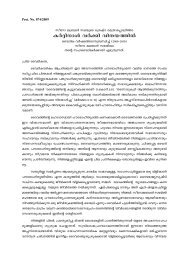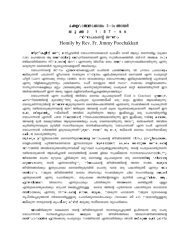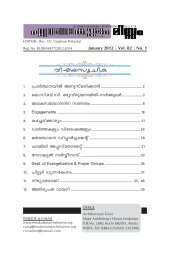THE TRINITARIAN COMMUNION - Archdiocese of Ernakulam ...
THE TRINITARIAN COMMUNION - Archdiocese of Ernakulam ...
THE TRINITARIAN COMMUNION - Archdiocese of Ernakulam ...
Create successful ePaper yourself
Turn your PDF publications into a flip-book with our unique Google optimized e-Paper software.
should constitute a single family, treating one another as brothers and sisters” (GS24). In this document the Council calls first for solidarity with all human beings and acommunion between women and men and a basic human solidarity in Christ (GS 32).This solidarity and communion is more clearly explained in Ecclesia in Asia (24) byquoting both from Post-Synodal Apostolic Exhortation Christifideles Laici and LumenGentium, that ‘at the heart <strong>of</strong> the mystery <strong>of</strong> the Church is the bond <strong>of</strong> communionwhich unites Christ the Bridegroom to all the baptized. Through this living and lifegivingcommunion, “Christians no longer belong to themselves but are the Lord’svery own.” (Post-Synodal Apostolic Exhortation Christifideles Laici [December 301988], 18: AAS 81 91989), 421). United to the Son in the Spirit’s bond <strong>of</strong> love,Christians are united to the Father, and from this communion flows the communionwhich Christians share with one another through Christ in the Holy Spirit (LG 4, EA24). Therefore the communion that is emphasized in the Church document Ecclesia inAsia is on three levels: Communion within the human person, Communion among theChristians which flows from the communion with the Father, the Son Jesus Christ,and the Holy Spirit, and finally communion with the whole human race (EA 24-25). 115Communion is the main thrust <strong>of</strong> Vatican II and its aftermath. This we haveconsidered until now and this communion has its roots in the Triune God, who is themodel for our communion both in the Church and Society, with God and humanbeings, and among human beings themselves. Our understanding <strong>of</strong> the Trinitariancommunion and its inspiration motivates us to enter into this communion toexperience the love <strong>of</strong> God and the neighbour.ConclusionHuman life in a community or a society grows in relationship with one’sparents, family members, neighbours and other human beings. Human beings do notlive an isolated life but a communitarian life. This is a web <strong>of</strong> interpersonalrelationships from which each human person accumulates her/his personality andgrows as a person. Therefore each person in the community is related to the otherpersons. Human life grows in the soil <strong>of</strong> interpersonal relationships whence the life <strong>of</strong>communion/fellowship develops from it. Thereby a person learns about the other andenters into the other’s life and establishes fellowship with the other. This takes placenot by learning the facts <strong>of</strong> that person’s past or present life but by “seeing with the


